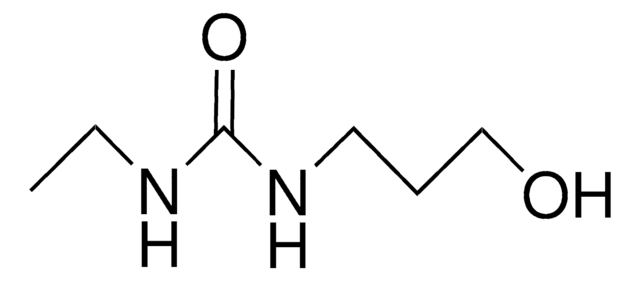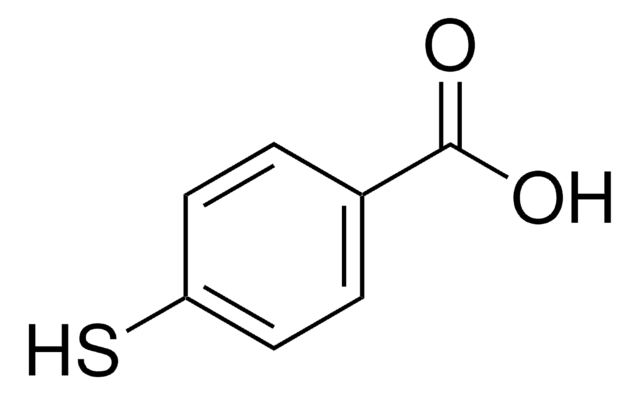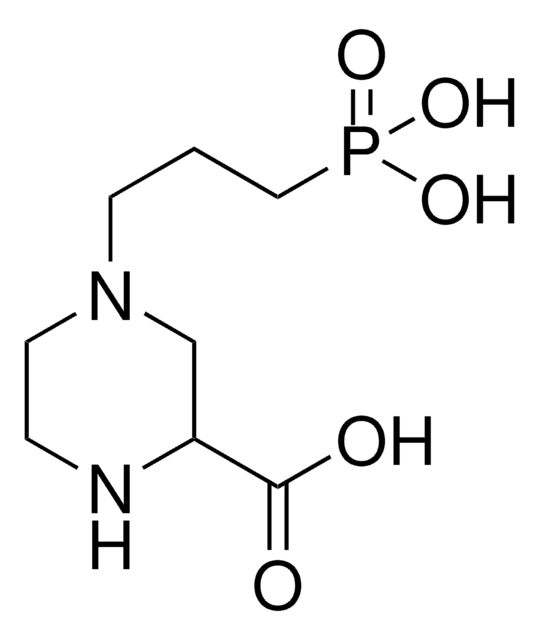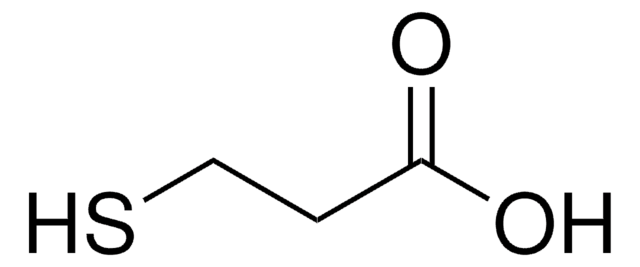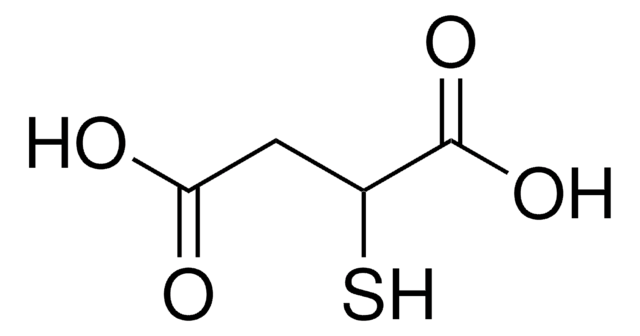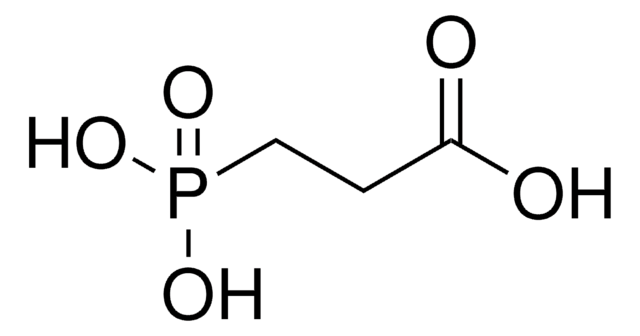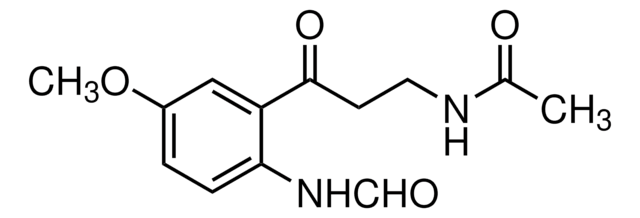SML1612
2-PMPA
≥98% (HPLC), powder, glutamate carboxypeptidase II inhibitor
동의어(들):
2-(Phosphonomethyl)-pentandioic acid, 2-Phosphonomethyl pentanedioic acid, PMPA
로그인조직 및 계약 가격 보기
모든 사진(1)
About This Item
실험식(Hill 표기법):
C6H11O7P
CAS Number:
Molecular Weight:
226.12
MDL number:
UNSPSC 코드:
12352200
PubChem Substance ID:
NACRES:
NA.77
추천 제품
제품명
2-PMPA, ≥98% (HPLC)
Quality Level
분석
≥98% (HPLC)
양식
powder
저장 조건
desiccated
색상
white to beige
solubility
H2O: 20 mg/mL, clear
저장 온도
room temp
SMILES string
O=C(O)CCC(C(O)=O)CP(O)(O)=O
InChI
1S/C6H11O7P/c7-5(8)2-1-4(6(9)10)3-14(11,12)13/h4H,1-3H2,(H,7,8)(H,9,10)(H2,11,12,13)
InChI key
ISEYJGQFXSTPMQ-UHFFFAOYSA-N
관련 카테고리
생화학적/생리학적 작용
2-(phosphonomethyl)pentanedioic acid (2-PMPA) blocks intravenous cocaine self-administration maintained by low unit doses of cocaine. In addition, it also inhibits cocaine-induced reinstatement of drug-seeking behavior. 2-PMPA reduces blood oxygen-level dependent (BOLD) signals in brain of anesthetized mice.
2-PMPA is a potent (IC50 ~ 1 nM) and selective inhibitor of Glutamate carboxypeptidase II (GCPII), also known as N-acetyl-L-aspartyl-L-glutamate peptidase I (NAALADase I), NAAG peptidase, or prostate-specific membrane antigen (PSMA). 2-PMPA has neuroprotective activity activity. 2-PMPA has been shown to prevent and treat cognitive impairment in the EAE model of multiple sclerosis and to protect against soman-induced neuropathology.
2-PMPA is a potent and selective inhibitor of Glutamate carboxypeptidase II (GCPII).
신호어
Warning
유해 및 위험 성명서
Hazard Classifications
Eye Irrit. 2 - Skin Irrit. 2
Storage Class Code
11 - Combustible Solids
WGK
WGK 3
Flash Point (°F)
Not applicable
Flash Point (°C)
Not applicable
가장 최신 버전 중 하나를 선택하세요:
2-PMPA, a NAAG peptidase inhibitor, attenuates magnetic resonance BOLD signals in brain of anesthetized mice
Baslow M H, et al.
Journal of Molecular Neuroscience, 26(1), 1-16 (2005)
Mena Asha Krishnan et al.
Biomaterials science, 9(6), 2295-2312 (2021-02-09)
The current challenge in fluorescence guided surgery (FGS) for prostate cancer (PCa) is in the design of imaging probes with high selectivity, clear visualization of tumour margins, and minimal toxicity. This report aims to design and develop a novel NIR-nanoprobe
Inhibition of N-acetylated-alpha-Linked-Acidic Dipeptidase (NAALADase) by 2-PMPA Attenuates Cocaine-Induced Relapse in Rats: A NAAG-mGluR2/3-Mediated Mechanism
Xi Z X, et al.
Journal of Neurochemistry, 112(2), 564-564 (2010)
Eden Kapcan et al.
Current protocols in chemical biology, 12(4), e88-e88 (2020-12-17)
The emergence of covalent inhibitors and chemoproteomic probes in translational chemical biology research requires the development of robust biophysical and analytical methods to characterize their complex interactions with target biomolecules. Importantly, these methods must efficiently assess target selectivity and accurately
Mena Asha Krishnan et al.
Current protocols in chemical biology, 10(4), e50-e50 (2018-09-14)
Present treatment strategies focus on minimizing unwanted toxicity to healthy cells during chemotherapeutic treatment. This is achieved by developing strategies to selectively deliver drugs to malignant cells over-expressing specific protein biomarkers. The drugs are attached via a self-immolative linker to
자사의 과학자팀은 생명 과학, 재료 과학, 화학 합성, 크로마토그래피, 분석 및 기타 많은 영역을 포함한 모든 과학 분야에 경험이 있습니다..
고객지원팀으로 연락바랍니다.
